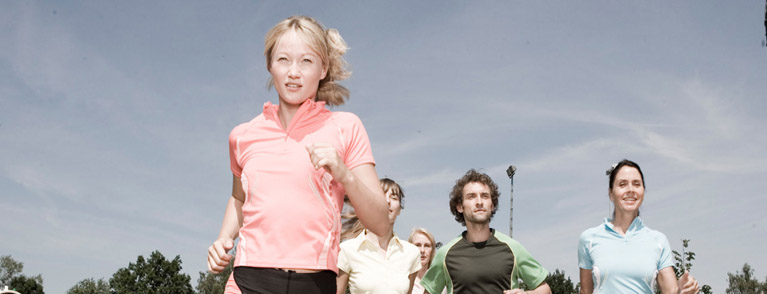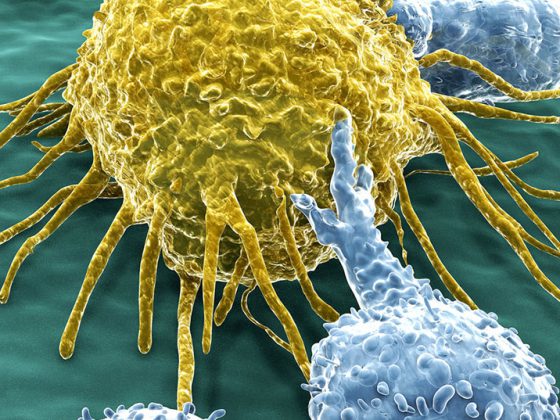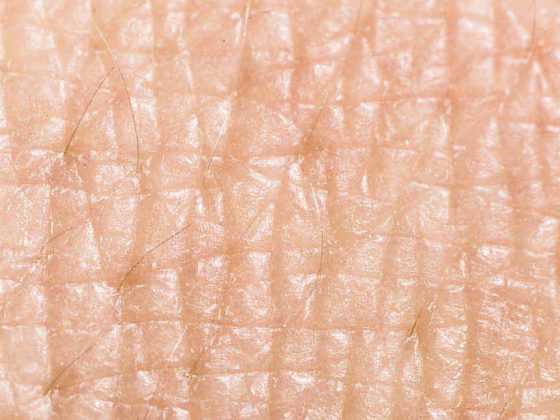It can never be emphasized enough: Regular physical activity is beneficial to health and has not only a curative effect on existing pathologies, but above all a preventive effect. Running stands out as a particularly recommendable activity as the archetype of human movement par excellence. But how healthy is this sport actually from a medical point of view?
Everyone with a reasonably healthy musculoskeletal system can run. Although this statement is not entirely true when it comes to running as a sport with a certain intensity, running is fundamentally so banal that the necessary movements are often underestimated: If you want to be fast and above all practice this sport without damage, then a good technique is indispensable. So even running has to be learned. Because the stresses that act on the body are anything but small. The biomechanics of running teaches us that during jogging, the body is subjected to three to five times the weight of the body with each step, which, at 8000-10,000 steps per day, represents a load of 2.5 tons for a person weighing 70 kg, and no less than 900 tons per year! So it is not surprising that this basically so healthy sport overstresses the human body under certain circumstances.
Problems that can arise from running
In fact, runners often suffer not from injuries but from so-called overuse symptoms, i.e. a disproportion between the load capacity of a certain tissue and the actual load. Among them, one finds tendinosis, bursitis, fatigue fractures, arthrosis, lug syndromes, and muscular imbalances (to name only the most common). Not surprisingly, more than 80% of these disorders occur in the lower extremities.
The term “overload” suggests that the only thing that matters is the level of stress, but we know from medical practice that this is not the case. In most cases, examination of the injured runner also reveals load-independent confounding factors. Some in the macroscopic range, i.e. visible to the trained eye, some in the microscopic range, where appropriate procedures make the problem visible (e.g. gait and walking analysis).
How can running-related health problems be prevented?
A central function of sports medicine is prevention. To be able to define prophylactic measures, there is a model established according to Van Mechelem:
- First, the incidence of the problem must be elicited.
- Second, the etiology and the mechanisms leading to it need to be clarified.
- The third step is the elaboration of preventive measures.
- The fourth step is to test the effectiveness by repeating the first step.
- This process has been gone through several times in running.
Incidence
The incidence of running-related health disorders is high and is described in the literature with figures between 20% and 85%. In other words, 2.5-5.8 faults per 1000 running hours must be expected. It is interesting to note that these figures have hardly changed since the 1980s, when they were collected in a study at the Grand Prix of Bern, until today.
Etiology
When looking for etiologic factors, most studies mention training, anatomy, and biomechanics.
Training: In the training factor, the elements of frequency, intensity, duration and preparation measures such as stretching, run-in/run-out, shoes, base and running style were analyzed. It could be shown that stretching, good run-in and run-out as well as the choice of floor can hardly be considered as relevant influencing factors. There is a vast amount of work in the field of footwear, but in summary it can be argued that modern footwear technology has not yet succeeded in influencing the incidence of running injuries. For shoe manufacturers, the results of certain studies are even devastating: runners who do not give preference to any particular brand of shoes are characterized by a lower frequency of complaints, and cheaper shoes do not prove to be more “injury-prone”. Even the fashionable barefoot walking or walking in minimally supportive shoes has not yet produced any evidence of a preventive effect. Running style is another much-discussed factor. Whether forefoot, midfoot or rearfoot runners, no advantages of one or the other style could be identified here either.
Anatomy: The most studied risk factor for runner overuse is the foot itself. From an anatomical point of view, “strongly supinating”, “supinating”, “neutral”, “pronating” and “strongly pronating” feet are usually distinguished. In this area, too, no correlations between foot shape and the risk of overloading during running could be demonstrated. The same can be said of asymmetries of the lower extremities.
Biomechanics: Even with the so-called biomechanical factors such as kinematics and kinetics, no reliable findings could be found to explain runner injuries.
Prevention measures and testing of effectiveness
Despite a lack of evidence in the search for clear risk factors for the development of running-related overuse injuries, various works can be found in the specialized literature that attempted to reduce the incidence of injury from running through specific measures such as specific preparation, training planning, and use of special equipment. However, the evidence for all measures remains weak for the time being. After all, many authors agree that training errors (too much, too often, too intense) play a major role (up to 70%). The overload symptom occurs when the stimulated tissue has no time to recover, i.e. adapt, after the stress, which can easily occur even in recreational runners running up to 100 km per week. From our point of view, it is interesting that poor muscular stability in the pelvic girdle can be a relevant cause of problems. Strength training in general and especially in this area would do the runner good – but all too often the runner worries exclusively and in an almost pathological way about his mileage bookkeeping. For this reason, active regeneration measures come up short, if not ignored completely.
Therapy: Relieving pain alone is not enough
The previous descriptions and thoughts may be interesting, but are theoretical in nature. In practice at the latest, however, the problem takes on a very concrete form: With the high incidence of health disorders in running, quite a few runners will visit the office of the general practitioner with the aim of finding relief for their pain. In these cases, high-quality medicine is required. Since the problem is almost exclusively one of overuse, simply treating the symptoms will alleviate the consequences of the problem, namely the pain or swelling, but not its cause. We have seen how lengthy the search for this possible cause can be. One problem is that the examination in the doctor’s office usually takes place while the patient is lying down, sitting or, in the best case, standing. This for problems that arise from the movement! Observing the movement is therefore of utmost importance, which is anything but easy. Much easier is a careful survey of training habits, in all their details. Very often, useful advice can be derived from this.
Keep moderation
One important finding is therefore: The health-promoting effect of running does not increase linearly in relation to the amount of training. New findings have shown: Too much running is bad for your health. People who exercise one to two and a half hours a week reduce their risk of death by about 70% compared to inactive people. But if you exercise more than four hours a week, you lose this benefit completely. Once again, the truth lies in the right measure.
HAUSARZT PRAXIS 2015; 10(10): 2-3











